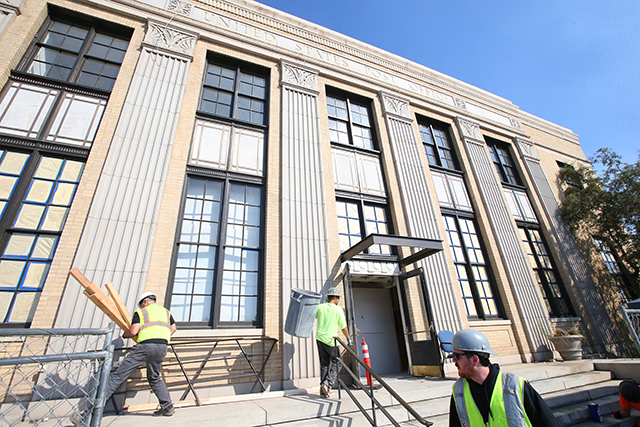Econobox revival
Published 4:00 am Friday, February 10, 2012
When Japanese cars and trucks began arriving in the United States in earnest during the 1970s, they were widely seen as disposable.
Reliable, maybe. Future classics? Not likely.
Trending
But in the past decade, those bargain-price models from the ’70s and ’80s have been revisited by a generation of enthusiasts who grew up riding in the back seats.
“For many like myself, it’s nostalgic,” said Jun Imai, 36, a designer at the Hot Wheels division of Mattel, where he directed the styling for die-cast models of two 1970s-vintage Nissans released last year.
“It’s a very special feeling I have for cars like these — the designs, the sound of the engines, the way they drive,” Imai said. “They are so distinctive, yet most are approachable in terms of costs and availability.”
Imai, who lives in Southern California, owns a 1971 Datsun 510 wagon and a 1972 Datsun pickup. The vehicles’ peculiar silhouettes, diminutive scale and heavy use of chrome trim are typical of Japanese styling of the period.
Yorgo Tloupas, a co-founder and creative director of Intersection magazine, which is based in Paris, is the owner of a 1981 Honda Prelude.
“I love that they don’t look like anything else,” Tloupas said.
Trending
“The first time I saw the Honda 600, I had to have the car,” he said, referring to the tiny 2-cylinder sedan that was among the company’s first models shipped to the United States.
The trend has grown rapidly. In 2005, Terry Yamaguchi, 39, and her husband, Koji, 41, who own a 1972 Toyota Celica coupe and a 1977 Celica liftback, started a casual meet-up in Long Beach, Calif., for like-minded enthusiasts. Owners brought more than 200 cars. The next year they created an official event, the Japanese Classic Car Show, now in its seventh year and attracting some 350 entries.
“We were not going to continue,” Terry Yamaguchi said. “It cost a lot and we didn’t have any sponsors. We only did it for ourselves. But people were excited.”
Nostalgic cars
The Japanese have a term for their suddenly trendy vintage cars. They are called nostalgic cars, said Benjamin Hsu, a co-founder of Japanese Nostalgic Car, a website and magazine based in Diamond Bar, Calif.
“You know how the Japanese like to appropriate English terms but use them in a slightly different way?” Hsu said.
Yet the name is fitting. The demographic that’s seemingly responsible for the popularity of Japanese nostalgic cars is 30-something men who grew up with the cars. Imai remembers his uncles working on and racing Datsun 510s and 240Zs when he was a boy.
“When you have cars that were everyday cars, there’s an emotional connection,” said Bryan Thompson, a designer for Nissan, both in the Japan and the United States, from 2001 to 2009. “They’re a part of your life in the way a pet is a part of your life, or a family member.”
Thompson, who is now a contract designer for Volvo, cited his parents’ 1983 Toyota Tercel wagon as the inspiration behind his career choice.
For Hsu, interest in the era’s cars was stimulated during a layover at the Narita airport near Tokyo on a trip to Taiwan.
“I stepped out for one second and saw the coolest cars I had ever seen,” he said. “They were cars that I never knew existed. That kind of blew my mind.”
Hsu founded the Japanese Nostalgic Car website with his brother, Dan, in 2006. They began publishing the magazine, a quarterly, two years later.
Japanese trends
Hsu said that the nostalgic car trend in the United States was partly an evolution of the Japanese import-tuning craze of the 1990s that spawned the “Fast and the Furious” film franchise. A further push came around 2000, as interest rose in performance cars made for Japan’s home market (a movement in its own right, known as Japanese Domestic Market, or JDM).
“People really wanted to find out what Japanese people were doing,” Hsu said. “And what Japanese people were doing was drifting.”
Drifting, a professional motor sport in Japan since 2000, came from the same hooligan spirit as drag racing. But instead of speeding in a straight line, drivers slide their cars around curves, smoke pouring off the tires. It required a specific kind of car — lightweight, and more important, rear-drive.
“Japanese companies weren’t building rear-wheel-drive cars, unless you get to high-end luxury,” Hsu said, which meant using models like the Toyota Corolla GT-S and the Nissan 240SX from the 1980s.
Many nostalgia-car enthusiasts modify the engines and suspensions, and install parts made for Japan-market models. But the appeal of vintage Japanese cars isn’t based solely on performance.
Tloupas, whose magazine collaborated with Honda last year in customizing a CR-Z, said he had always been captivated by Japanese design.
“They were kind of quirky, he said.
Thompson explained that Japanese designers were still trying to find their aesthetic and, much as Chinese automakers are doing today, they imitated existing forms.
“Look at a lot of the early to mid-1970s Japanese economy cars,” he said. “They were oftentimes reinterpretations of American cars from the 1960s. Because they didn’t have the same proportions, they were very strange.”








